The Context
Warriors have existed since the game’s inception, but they didn’t get powerful support until 2003 with the Legacy of Darkness booster set. This set introduced two cards that would go on to form the core of Warrior decks for years to come: Exiled Force and Reinforcement of the Army. These core cards worked to complement the already wide selection of different and diverse Warrior-type monsters that were available at the time. This caused the Warrior deck to gain significant traction at the locals level. However, because of the overwhelming power of decks like Hand Control and Chaos Control, Warriors were never able to make a significant foothold in the higher levels of the competitive meta.
Warrior decks wouldn't truly take off until the meta had flattened more by the time of Goat Format and later. This was largely due to the elimination of the most overwhelmingly powerful cards from the competitive game in combination with the release of further warrior support.
The Early Toolbox
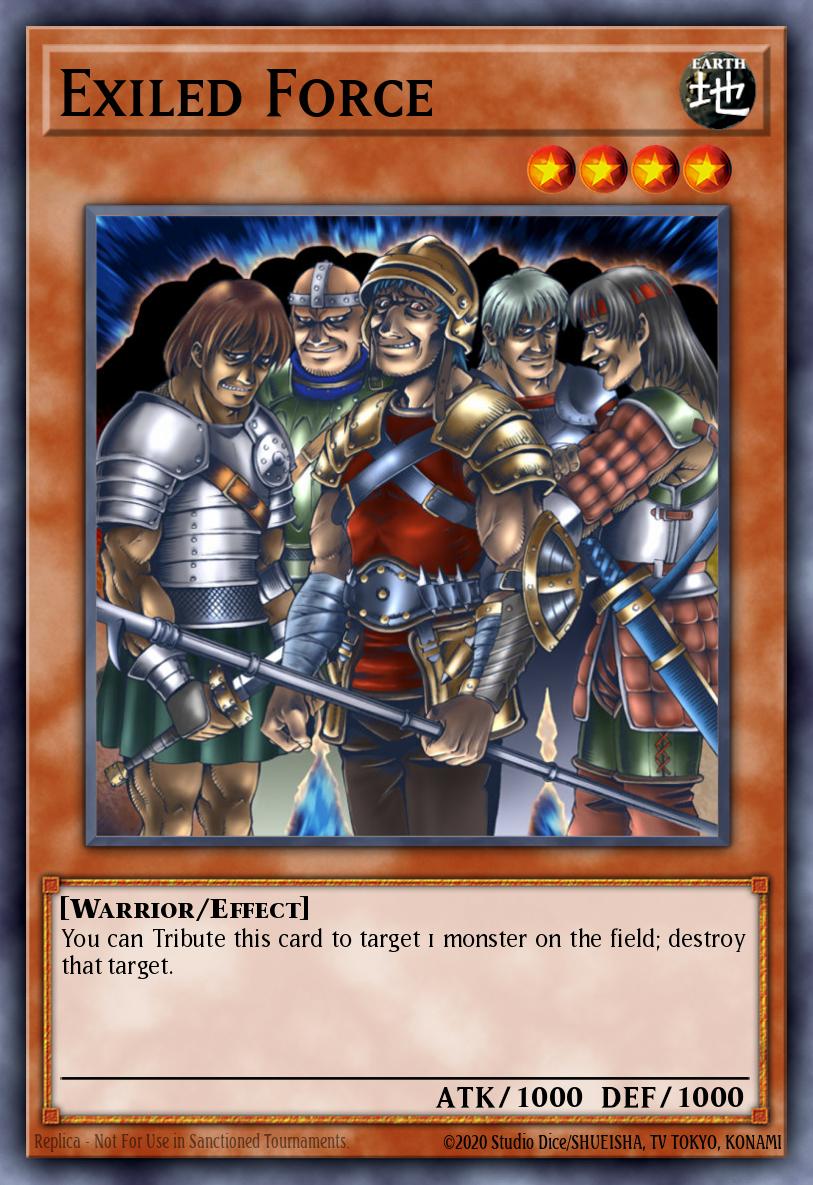 Exiled Force
Exiled ForceAlthough not all of the early Warrior cards saw competitive use, they're important to go over regardless. The most important Warriors were all released in Legacy of Darkness: Marauding Captain, Exiled Force, and Reinforcement of the Army. Exiled Force was definitely the most used out of these three, seeing play as a staple monster in almost all decks for years to come. The card's strength came from its targeted destruction at the cost of only one card. The only other truly comparable card at the time was Tribute to the Doomed, which required its user to discard a card, meaning that the user ended up with a net -1 in card advantage.
Marauding Captain was also an extremely vital card to the early Warrior deck’s strategy. By allowing a Special Summon, it gave a distinct advantage in field presence that other cards at the time could not properly match. Furthermore, Marauding Captain’s effect could be used to summon any other monster, giving it synergy with the various different staple monsters that saw play at the time such as Gemini Elf, Tribe Infecting Virus, and Sangan. He also gave essential protection from battle if used with other Warrior monsters, cementing his spot as the central piece in dedicated Warrior decks. Although he would fall off in usage in later iterations of the deck, Marauding Captain's ability to Special Summon a monster at a time when Special Summoning was uncommon landed it at Semi-Limited in an early Limited List.
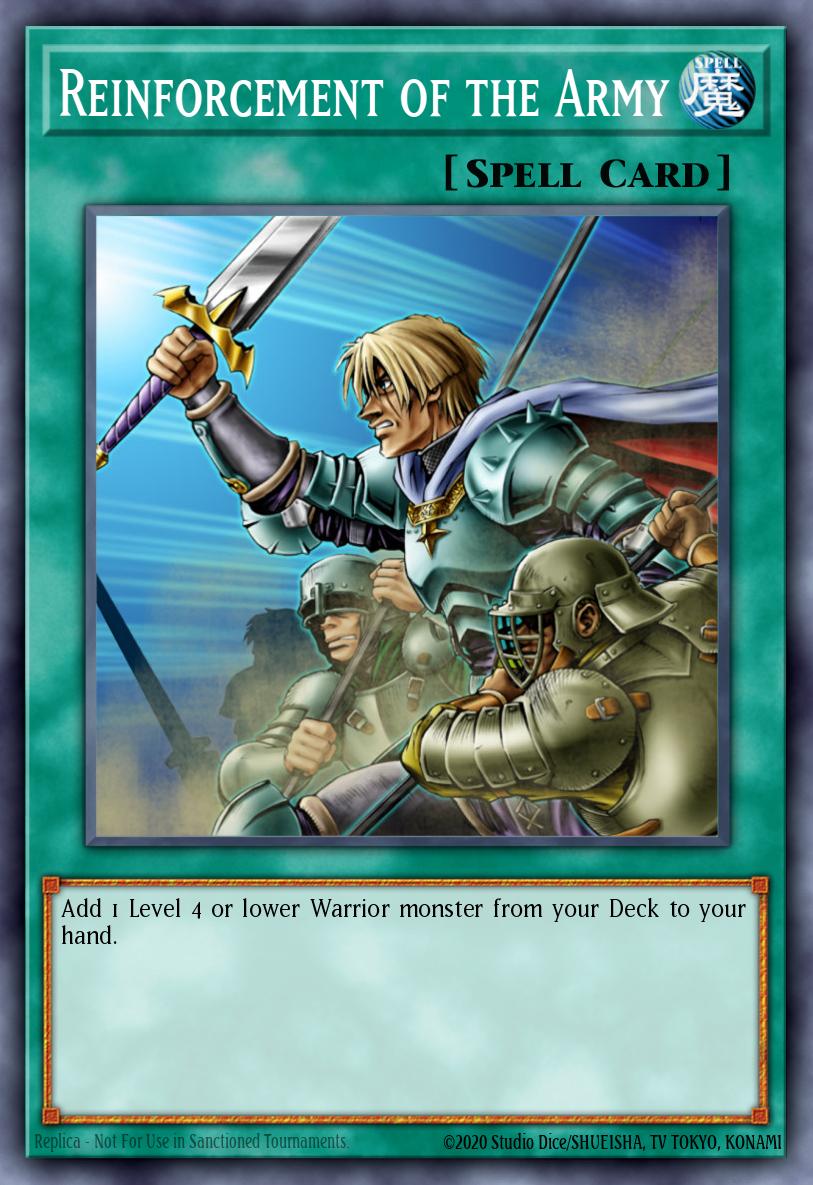 Reinforcement of the Army
Reinforcement of the ArmyFinally there was Reinforcement of the Army. While it didn't see massive usage at the time of its release, it was a truly revolutionary card. By providing search power in the form of a spell, it gave utility that nothing else at the time did: instant access to key combo pieces and important cards. At this point, the only other major searchers were monsters such as Sangan and Mystic Tomato which were most often activated by being destroyed by battle. This, combined with the wide variety of different effects that even early Warrior monsters offered, made this a great card that could be integrated into any deck that wanted to run a Warrior engine.
Beyond these three essential cards, there were a variety of different Warrior monsters that served as the “tools” of the deck. These included Sasuke Samurai, Hayabusa Knight, Goblin Attack Force, Zombyra the Dark, and Don Zaloog. All of these monsters served different purposes and could be searched easily with Reinforcement of the Army. Sasuke Samurai had the ability to destroy face-down Defense Position monsters without flipping them or performing damage calculation. The popularity of Magician of Faith and Mystic Tomato at the time made this particularly useful. Hayabusa Knight was largely useful for putting out damage through its multiple attacks and was often combined with a powerful Equip Spell such as United We Stand or Mage Power. Goblin Attack Force and Zombyra the Dark served largely the same purpose which was to establish a high attack threat on the board, protecting a player from being able to be overcome by standard 1900 ATK monsters or weaker tribute monsters such as Airknight Parshath and Vampire Lord. Blade Knight was also an especially popular Warrior across most decks after its release due to its combination of potentially high attack and the ability to prevent Flip Effects, giving it a similar usefulness to Mystic Swordsman LV2. Finally, there was Don Zaloog which allowed for the control of an opponent’s resources by discarding cards from their hand. However, while these monsters offered great utility, they didn't really counter the dominant Hand Control and Chaos strategies that kept Warriors out of the meta before 2005. The set of monsters that really brought Warriors into the spotlight were two monsters with similar effects: the D.D. monsters.
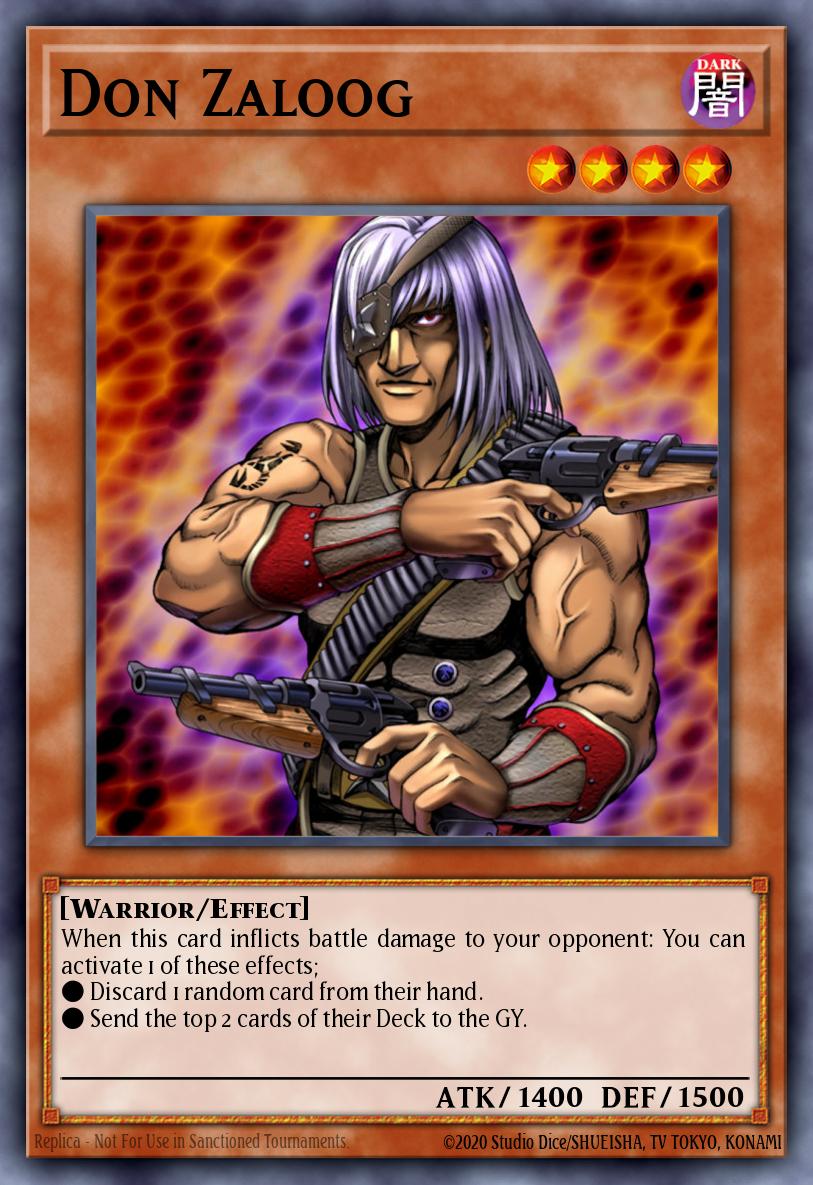 Don Zaloog
Don ZaloogD.D. Warriors
In late 2003, the Dark Crisis booster set was released and along with it came D.D. Warrior Lady. She immediately became a staple in almost every deck largely due to her banish based removal effect and her LIGHT attribute coming together to make a potent force for the upcoming Chaos meta of 2004. While D.D. Warrior Lady was definitely a staple, she was largely used in more dedicated Chaos decks and not paired with any other Warrior support. This would start to change by the end of 2004 with the release of two new cards: D.D. Assailant and Blade Knight. D.D. Assailant was released as a video game promo card in late 2004, although it didn’t immediately catch on in the meta. This would start to change as the post-Forbidden List meta solidified more by early 2005. The first major event of 2005, Shonen Jump Championship Las Vegas, would see the debut of a variant of the still popular Chaos deck that focused more on the two new D.D. Warrior monsters, often alongside Blade Knight or Don Zaloog. The popularity of this was largely pioneered by Wilson Luc, the winner of the event.
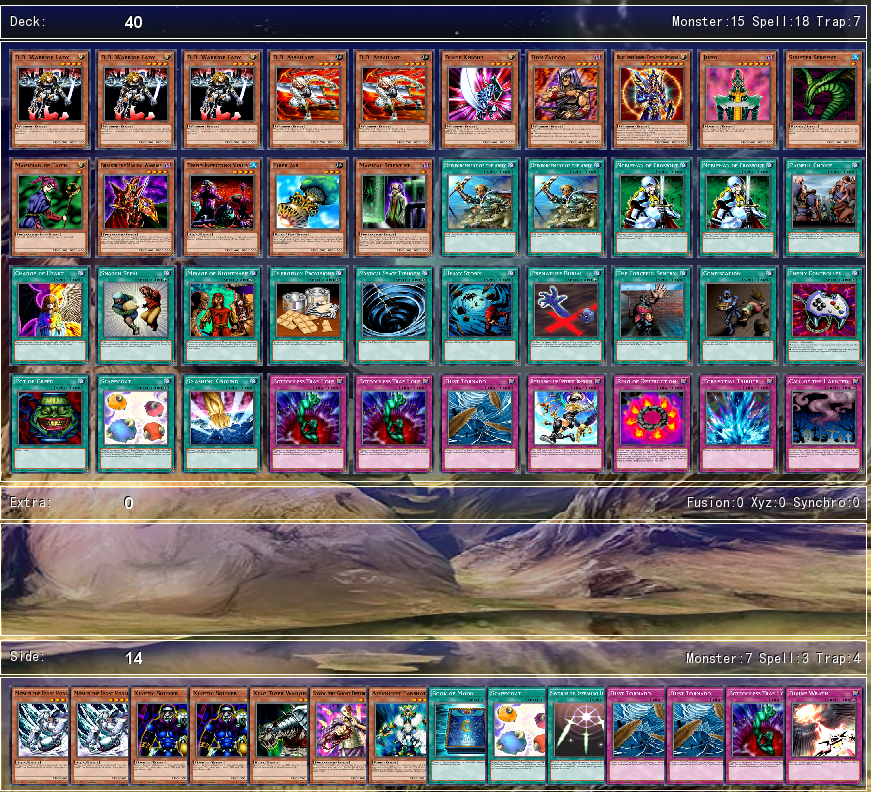
Download Deck
| Deck List | |
|---|---|
| Monsters | D.D. Warrior Lady x3 D.D. Assailant x2 Blade Knight x1 Don Zaloog x1 Black Luster Soldier - Envoy of the Beginning x1 Jinzo x1 Sinister Serpent x1 Magician of Faith x1 Breaker the Magical Warrior x1 Tribe-Infecting Virus x1 Fiber Jar x1 Magical Scientist x1 |
| Spells | Reinforcement of the Army x2 Nobleman of Crossout x2 Painful Choice x1 Change of Heart x1 Snatch Steal x1 Mirage of Nightmare x1 Emergency Provisions x1 Mystical Space Typhoon x1 Heavy Storm x1 Premature Burial x1 The Forceful Sentry x1 Confiscation x1 Enemy Controller x1 Pot of Greed x1 Scapegoat x1 Smashing Ground x1 |
| Traps | Bottomless Trap Hole x2 Dust Tornado x1 Return from the Different Dimension x1 Ring of Destruction x1 Torrential Tribute x1 Call of the Haunted x1 |
| Side | Mobius the Frost Monarch x2 Cipher Soldier x2 King Tiger Wanghu x1 Kycoo the Ghost Destroyer x1 Airknight Parshath x1 Book of Moon x1 Scapegoat x1 Swords of Revealing Light x1 Dust Tornado x2 Bottomless Trap Hole x1 Divine Wrath x1 |
He ran multiple copies of both D.D. Warrior Lady and D.D. Assailant alongside a Blade Knight and a Don Zaloog. Most importantly, he complemented these Warriors with 2 copies of Reinforcement of the Army. This inclusion of Reinforcement of the Army started a trend amongst Chaos decks in this format to utilize a small Warrior engine largely focused around getting the D.D. monsters out as quickly as possible. It was also the first real instance at a high level event of a deck with a more dedicated Warrior Engine winning.
After the April 2005 Forbidden List Limited D.D. Warrior Lady, the Warrior engine had to adjust. Instead of focusing its efforts entirely on searching out D.D. Warrior Lady as quickly as possible, a copy of D.D. Survivor was often added in. D.D. Survivor served as a counter-play to D.D. Assailant and D.D. Warrior Lady as it would return to the field after being banished, making it safe to use against an opponent's D.D. monsters. As the post-Forbidden List format started to transition into the classic Goat Format, the Warrior deck definitely became less popular. It didn’t fall out of the meta, however. Due to Reinforcement of the Army’s ability to search such a large cardpool at a time when searching was a relatively rare effect, the deck was able to maintain relevance. To replace the 2 copies of D.D. Warrior Lady that Warriors lost with the April 2005 Forbidden List, Don Zaloog and Exiled Force started to see a resurgence in play. Goat Format also saw the rise in the Warrior engine as a side deck choice in several top deck lists. The advantage of this was the versatility that many monsters in the Warrior Toolbox provided while simultaneously increasing the chances of seeing D.D. Warrior Lady and Blade Knight, cards that most Chaos oriented decks of the format already ran. Of particular note for the Warrior Toolbox side deck was the use of Mystic Swordsman LV2, a slightly stronger version of the older Sasuke Samurai. While Flip Effect monsters had fallen largely out of favor during the higher powered Chaos formats, they saw a resurgence in the slower Goat format. Magician of Faith started to be run at higher quantities in many decks and was often used alongside other monsters that Mystic Swordsman could bypass such as Apprentice Magician, Night Assailant, and D.D. Assailant.
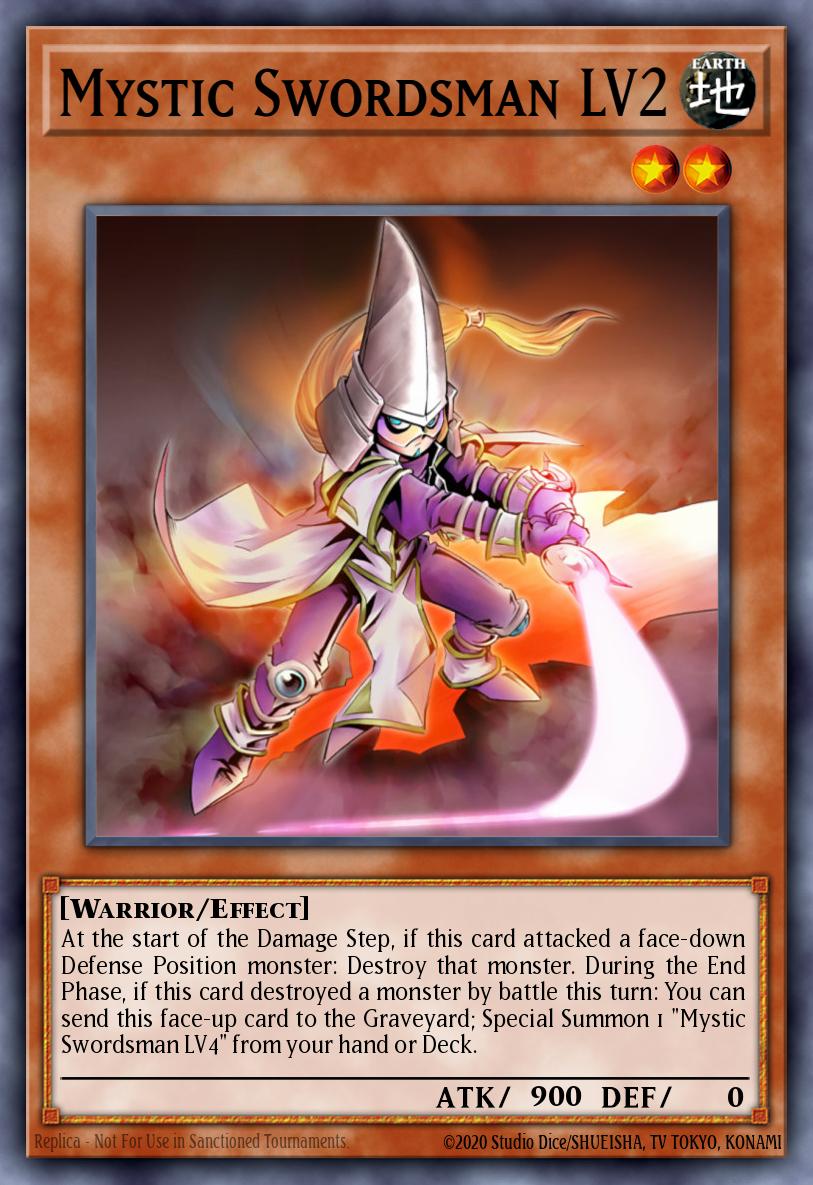 Mystic Swordsman LV2
Mystic Swordsman LV2The Rise of the Toolbox
As Goat Format wound down in the fall of 2005 with the October 2005 Forbidden List, the new format seemed relatively wide open. In the power vacuum left by Goat Control, Warrior Toolbox rose to the occasion. The consistency that the deck was able to offer combined with its ease of access to D.D. Assailant, a card that was rapidly becoming a staple in all decks, allowed Warrior Toolbox to rise to the top. The standard set of Warrior monsters stayed roughly the same as it had been during Goat Format. The main advantage that the deck had over other competitive decks at the time, such as Monarchs, was its versatility. Before the prevalence of Warrior Toolbox, the dominant deckbuilding strategy in the TCG had been to fill the deck with as many generic and powerful cards as possible. This strategy had proven to be very efficient before the first Forbidden List due to the sheer volume of extremely powerful generic cards available in the card pool, but by the fall of 2005 most of those cards had been either Limited or Forbidden. The Warrior Toolbox, however, still offered a similar type of utility that many of those Limited and Forbidden cards had. It was because of this combination of factors that the Warrior Toolbox engine rose to prominence as the best deck of the October 2005 Forbidden List format. The main shift from how the deck was played in Goat Format was the increased frequency of 3 copies of D.D. Assailant as well as the main deck usage of a larger set of Warriors. While before usually only 2 non-D.D. Warriors were run in the main deck, once Warrior Toolbox entered the higher level meta, it was common to see players running a copy of Don Zaloog, Exiled Force, and Mystic Swordsman LV2 in the main deck in addition to Blade Knight or a larger D.D. engine in some cases.
The first major win for a more dedicated Warrior Toolbox deck was Fili Luna’s first place decklist at Shonen Jump San Francisco in December 2005.
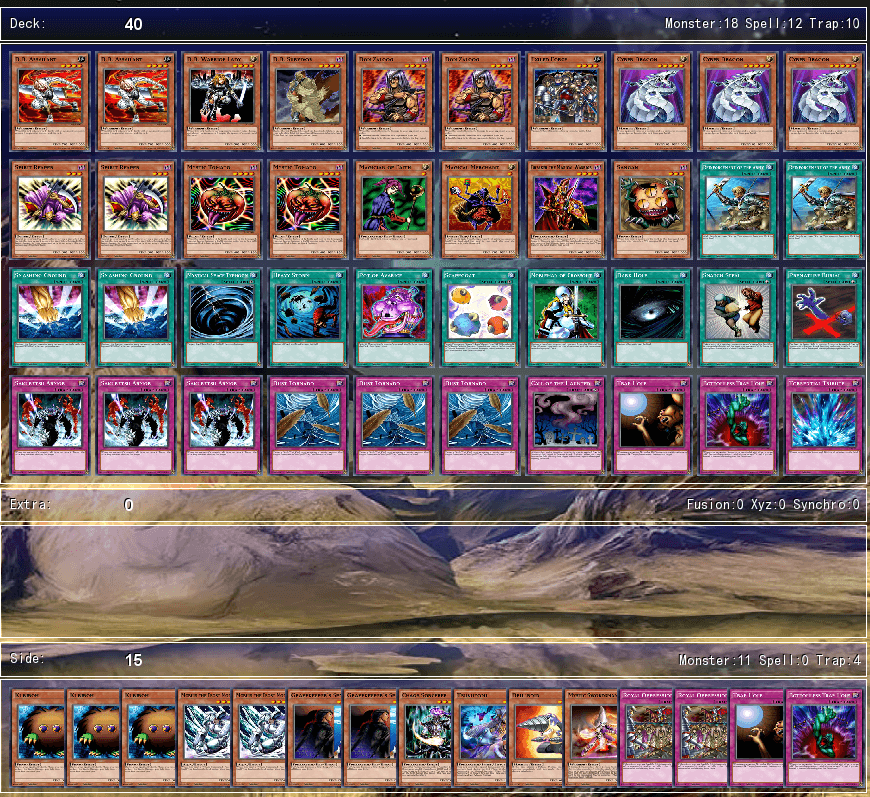
Download Deck
| Deck List | |
|---|---|
| Monsters | D.D. Assailant x2 D.D. Warrior Lady x1 D.D. Survivor x1 Don Zaloog x2 Exiled Force x1 Cyber Dragon x3 Spirit Reaper x2 Mystic Tomato x2 Magician of Faith x1 Magical Merchant x1 Breaker the Magical Warrior x1 Sangan x1 |
| Spells | Reinforcement of the Army x2 Smashing Ground x2 Mystical Space Typhoon x1 Heavy Storm x1 Pot of Avarice x1 Scapegoat x1 Nobleman of Crossout x1 Dark Hole x1 Snatch Steal x1 Premature Burial x1 |
| Traps | Sakuretsu Armor x3 Dust Tornado x3 Call of the Haunted x1 Trap Hole x1 Bottomless Trap Hole x1 Torrential Tribute x1 |
| Side | Kuriboh x3 Mobius the Frost Monarch x2 Gravekeeper's Spy x2 Chaos Sorcerer x1 Tsukuyomi x1 Drillroid x1 Mystic Swordsman LV2 x1 Royal Oppression x2 Trap Hole x1 Bottomless Trap Hole x1 |
At its core, the deck was still filled with many staples of the format such as Cyber Dragon, Spirit Reaper, Sakuretsu Armor, and Smashing Ground but what makes Luna’s deck special was its shirking of Chaos. Most meta decks at the time were focused on Chaos Sorcerer with some D.D. monsters and a small Warrior Toolbox, usually run with only 0 or 1 copy of Reinforcement of the Army. Luna’s deck, however, was a much more dedicated Warrior deck, running a 4 card D.D. engine, 2 copies of Don Zaloog, and Exiled Force. This coupled with his 2 copies of Reinforcement of the Army (the maximum legal amount allowed at the time) made the deck much more consistent and able to outpace the opponent in terms of resources. Although Luna’s side deck was largely devoid of Warriors, it did include a single copy of Mystic Swordsman LV2 to counter decks that focused more on Flip Effect monsters.
While Warrior Toolbox had dominated the late 2005 meta game, the beginning of 2006 saw the meta start to shift in a different direction. The shift was more towards summoning out powerful monsters such as Chaos Sorcerer and the Monarch monsters. While these cards had been played previously, strategies were now starting to converge around them. Because of this, the more utilitarian nature of Warrior Toolbox started to lose out. There were a few main decks that started to supplant Warriors: Chaos, Tomato Control, and Monarchs. Chaos had already been present in the previous format, but was often just a standard Beatdown style deck that ran a single copy of Chaos Sorcerer for much the same reason that Black Luster Soldier had been run during the Goat Format. The newer iteration of the deck started to run multiple copies of Chaos Sorcerer and viewed summoning it as one of the main goals of the deck. This naturally didn’t mesh well with the Warrior Toolbox as many of its members were Earth, giving them no synergy with Chaos Sorcerer. Tomato Control also proved to be a powerful contender in the meta as the deck had a similar consistency to Warriors. Tomato Control's main advantage over Warriors was the deck's access to a more powerful pool of Dark monsters such as Apprentice Magician, Sangan, and Spirit Reaper. Finally, Monarchs started to see increasingly more play starting in 2006. While Monarchs had been out since 2004, the deck had only seen minor competitive play as a dedicated strategy before 2006. This would change mainly with the introduction of Treeborn Frog in early 2006. This card made it much easier to maintain the consistent tribute fodder that the deck needed to keep summoning Monarchs. The rise of these more dedicated Monarch decks helped to push out Warriors more than Chaos and Tomato Control due to their focus on Tribute Summoning not synergizing with Warriors, meaning that Monarch decks often opted to not even use the smaller Warrior engines that other decks did.
This did not, however, completely push Warrior Toolbox out of the meta. Several decks in the top 8 at SJC Orlando in March of 2006 ran a Warrior Toolbox engine, but even these decks had already started to move Warriors over to being a teched engine again instead of the main driving force behind the deck, opting to focus on Tomato Control or Chaos instead. One such example of a deck with a Warrior engine that also ran other primary strategies was Jerry Wang’s top 4 list from SJC Durham in February of 2006.
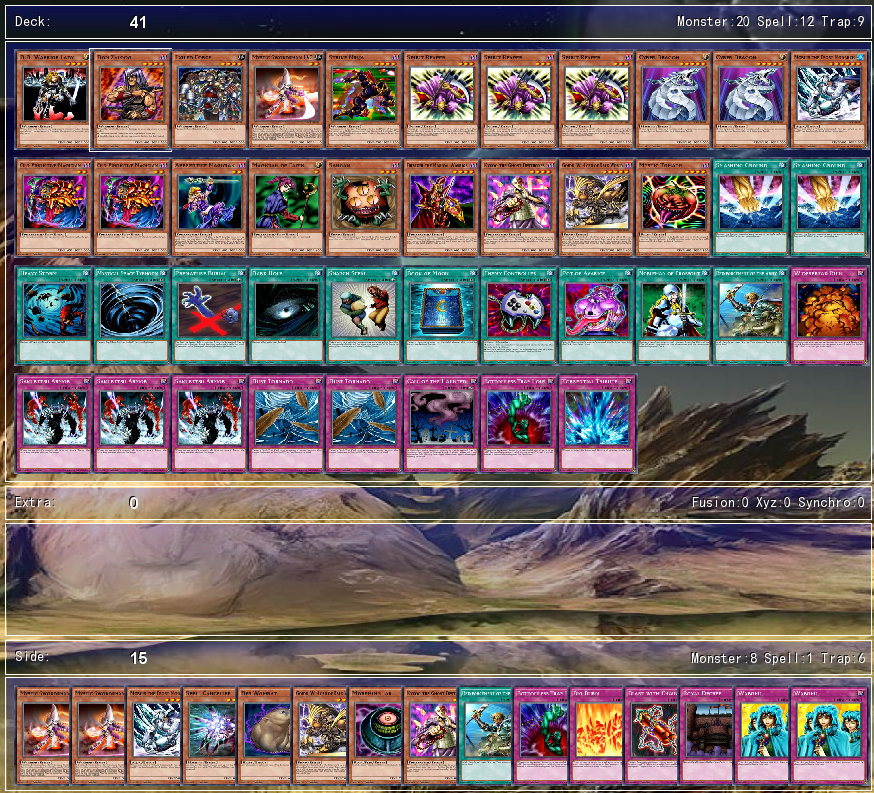
Download Deck
| Deck List | |
|---|---|
| Monsters | D.D. Warrior Lady x1 Don Zaloog x1 Exiled Force x1 Mystic Swordsman LV2 x1 Strike Ninja x1 Spirit Reaper x3 Cyber Dragon x2 Mobius the Frost Monarch x1 Old Vindictive Magician x2 Apprentice Magician x1 Magician of Faith x1 Sangan x1 Breaker the Magical Warrior x1 Kycoo the Ghost Destroyer x1 Goldd, Wu-Lord of Dark World x1 Mystic Tomato x1 |
| Spells | Smashing Ground x2 Heavy Storm x1 Mystical Space Typhoon x1 Premature Burial x1 Dark Hole x1 Snatch Steal x1 Book of Moon x1 Enemy Controller x1 Pot of Avarice x1 Nobleman of Crossout x1 Reinforcement of the Army x1 |
| Traps | Widespread Ruin x1 Sakuretsu Armor x3 Dust Tornado x2 Call of the Haunted x1 Bottomless Trap Hole x1 Torrential Tribute x1 |
| Extra | Mystic Swordsman LV2 x2 Mobius the Frost Monarch x1 Spell Canceller x1 Des Wombat x1 Goldd, Wu-Lord of Dark World x1 Morphing Jar x1 Kycoo the Ghost Destroyer x1 Reinforcement of the Army x1 Bottomless Trap Hole x1 Big Burn x1 Blast with Chain x1 Royal Decree x1 Waboku x2 |
The deck ran only a small Warrior engine, with no D.D. Assailant being present as the deck focused largely on Dark monsters to help synergize with both Mystic Tomato and Strike Ninja. He did side more Mystic Swordsman LV2 and the second copy of Reinforcement of the Army, but this can largely be attributed to how popular of a Side Deck choice Mystic Swordsman LV2 was at the time to counter the large number of floater monsters that were present in the meta.
The reign of dedicated Warrior Toolbox decks would be put to rest for good with the April 2006 Forbidden and Limited List which saw D.D. Assailant Limited. This eliminated the main focus of more dedicated Warrior engines. While various Warrior monsters would see play in the upcoming format, Reinforcement of the Army rarely accompanied them and they were mostly techs in the Chaos Return and Monarch decks that had come to dominate the format. By the time that the April 2006 format fully took shape, the Warrior Toolbox had largely been relegated to an even lesser status than it had held during Goat Format the previous year. Warriors would make a small resurgence after the October 2006 Forbidden List went into effect and Forbid Chaos Sorcerer, but the impact was small. The closest that the deck got to a last hurrah was Kris Leonhardt’s D.D. deck in late 2006, but this deck was more of a precursor to the more dedicated D.D. decks that would appear later, focused less on Warriors and more on the banish mechanic.
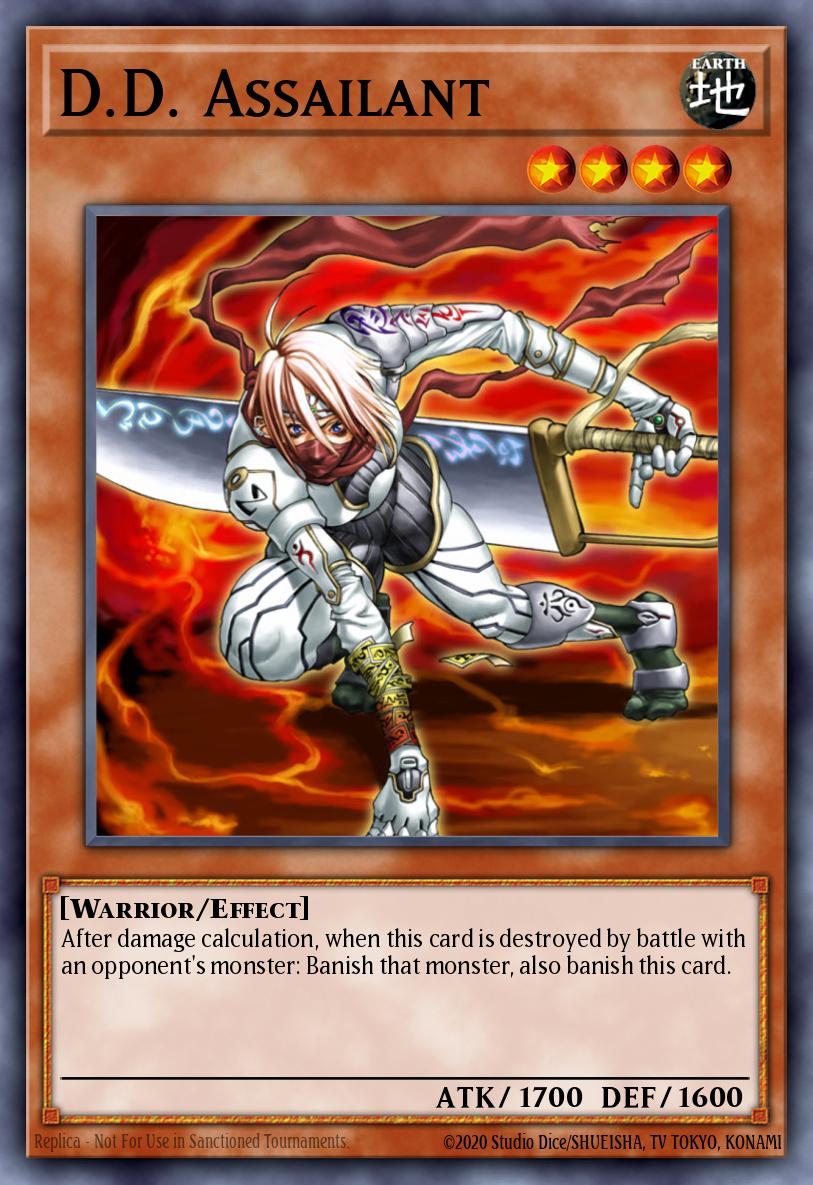 D.D. Assailant
D.D. AssailantThe Fall of the Warriors
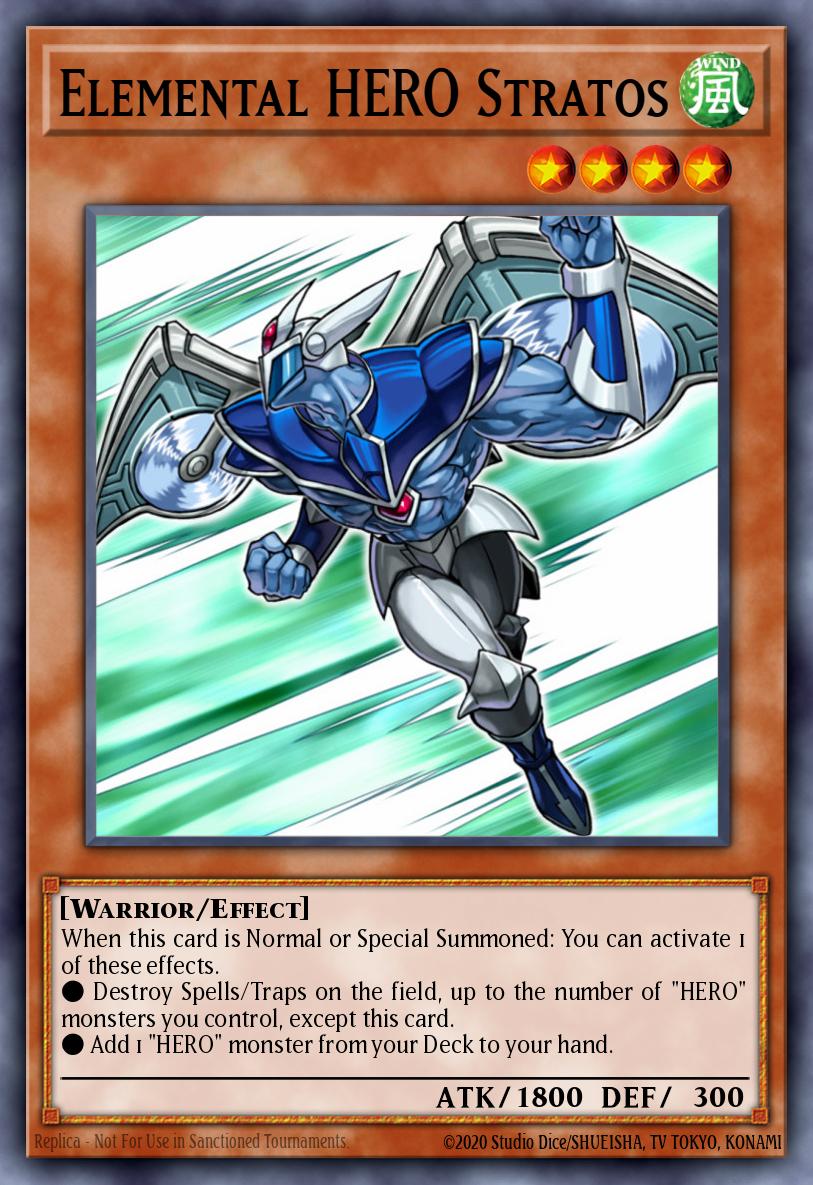 Elemental HERO Stratos
Elemental HERO StratosAs the game started to move forward, it was rapidly becoming too fast for older playstyles such as Warrior Toolbox to stay competitive. The deck that embodied this the most was Airblade Turbo. Upon its release, the sheer consistency and power level of cards such as Elemental Hero Stratos, Destiny Hero Diamond Dude, and Destiny Hero Disk Commander made the older utility Warrior cards obsolete. This new Destiny Hero engine would completely supplant the Warrior Toolbox as the Warrior engine of choice and while certain members of the toolbox would continue to pop up as tech choices throughout the rest of the era, they would never again sit as the dominant deck. Elemental HERO Stratos would tie this engine together and due to its much more potent searching capabilities, relegated Reinforcement of the Army to being a searcher more for Stratos than anything else. The final nail in the coffin of Warrior Toolbox as even a casual deck would arrive in the March 2009 Forbidden and Limited List with Reinforcement of the Army finally being Limited. Although it was Limited due to other more powerful Warrior engines, the Limiting of the core Warrior searcher made sure that any future attempt to bring the deck back would be for naught.
At its core, Warrior Toolbox started out as a casual deck and transformed into one of the very first competitive engines in the history of the game. While other engines would leave a more profound impact on the game’s history, Warriors came from a time where decks didn’t have a united central theme. The Warrior Toolbox engine would kick off the trend of more cohesive and synergistic decks. Due to the prevalence of archetypes in the game today, it is unlikely the Warrior Toolbox will ever come back as either a dedicated deck or as an engine. All in all, the Warrior Toolbox helped to shape the modern game of Yu-Gi-Oh! and while it didn’t last in the meta for very long its impact can still be seen in the game today.




